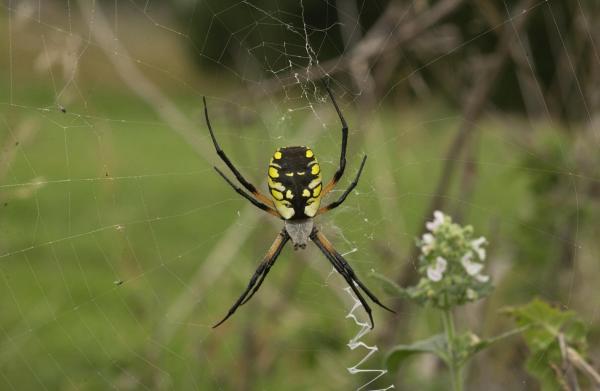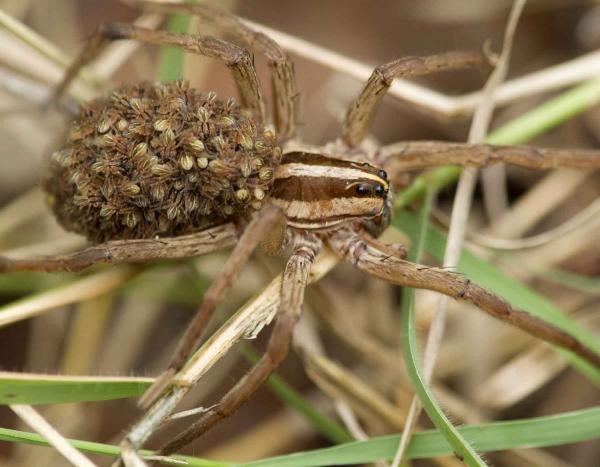Check in weekly, on Wednesdays, to read our new post on gardening, harvesting, and making use of that fine, extra-local produce! We’ll share tips and techniques, gleaned from our urban farms and gardens. Email info@growpittsburgh.org with any topics you’d like us to cover.
You’re harvesting in the garden or checking the leaves for signs of pests or disease, and all of a sudden you spot a spider, right under your nose! This startling occurrence is common in a diversified garden. Spiders often blend well into their environments and carefully lie in wait to attack unsuspecting insect passersby. So they can be startling to encounter!

This black and yellow garden spider builds a large web to trap insect prey. Photo from the Missouri Dept. of Conservation.
Spiders are a valuable piece of the garden ecosystem, as they voraciously eat insects, and do not eat plants. Spiders seem to have specific preferences in terms of which types of insects they prefer. And each plant attracts specific types of insects, so increasing the diversity of plants in the garden also increases the spider population.
Do spiders also eat beneficial insects? Because spiders are generalists and will eat a variety of insects, they will also eat beneficial insects. However, there is a net benefit to encouraging spiders to live in the garden, as pest populations often outweigh the number of beneficial insects.
Is it dangerous to harbor spiders in the garden? The short answer is, no. In general, spiders are slow to bite and have fangs that cannot pierce human skin. The vast majority of spiders, worldwide, are harmless. In Pennsylvania, the venomous black widow and brown recluse spiders are very rare.
Common spiders found in the garden include wolf spiders, which live in mulch and do not spin webs; garden spiders, which perch on large webs with a white zig-zag center; and crab spiders, which often perch on flowers the same color as their bodies.

This wolf spider is carrying its young on its back to protect them until they are large enough to be on their own. Photo from the Missouri Dept. of Conservation.
How to Identify a Spider
Spiders have:
- 8 legs
- 2 main body parts
- Fangs, but no antennae or wings
Lifestyle of the Spider
- Most spiders live for 1-2 years and overwinter as eggs or adults
- All spiders eat living animals – primarily insects, other spiders, and invertebrates
- Spiders use venom to paralyze their prey. They then insert digestive enzymes into the prey before consuming it.
- Spiders must shed their exoskeleton (molt) as they grow.
- Female spiders sometimes eat male spiders during the mating process!
- All spiders make silk, and some produce up to 7 types. Silk is used for catching prey, guide lines, dispersal, and nest building. Spiders can also eat their own silk to recoup some of the energy they used to produce it!
How to Invite Spiders to Your Garden
- Plant a wide diversity of crops and flowers, including some perennial plants to encourage overwintering
- Mulch your garden beds
- Avoid spraying pesticides
- Include a water feature in your garden
